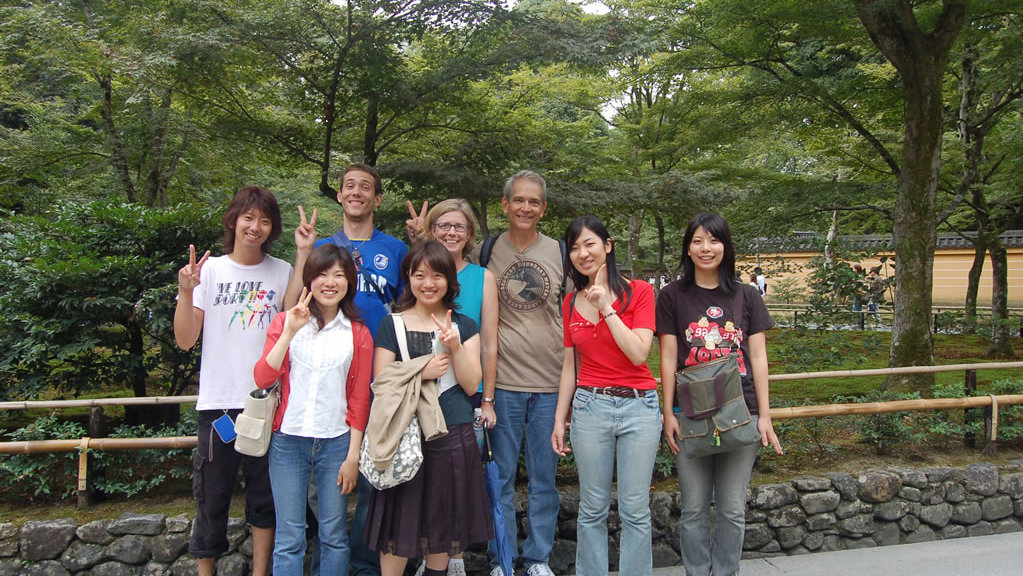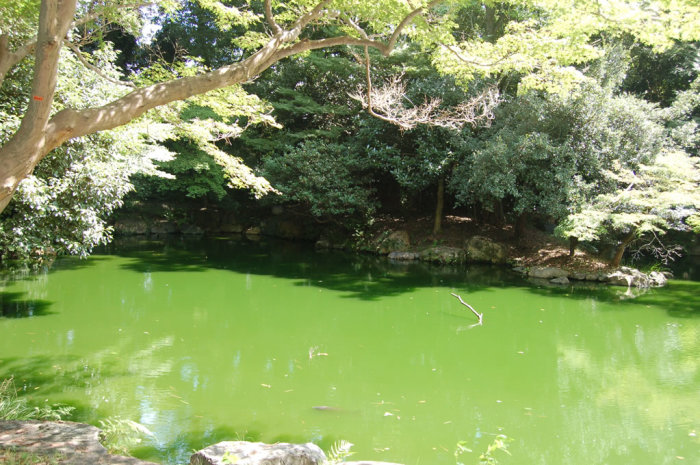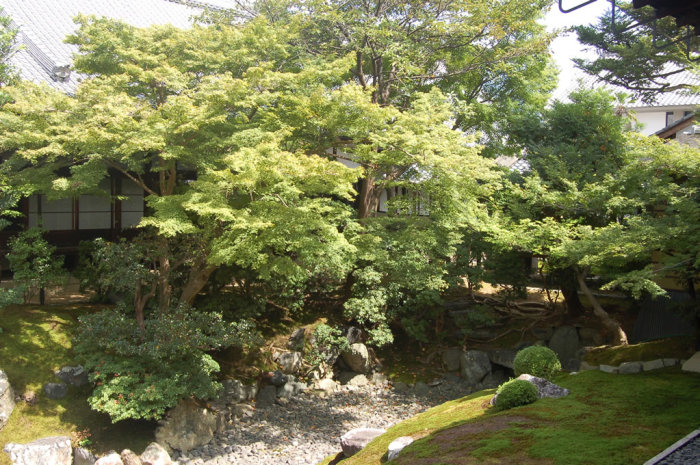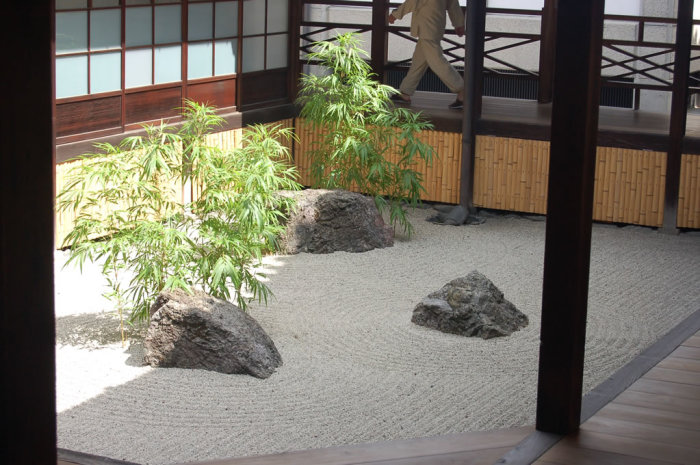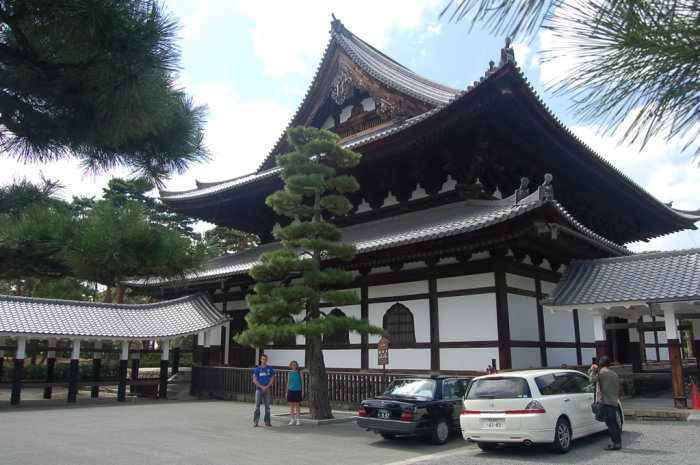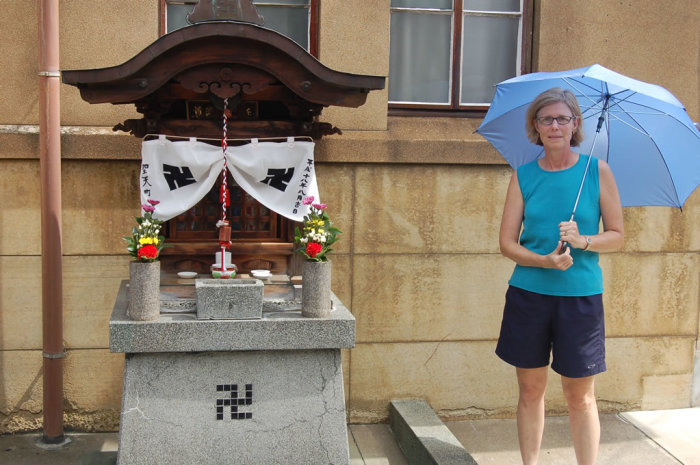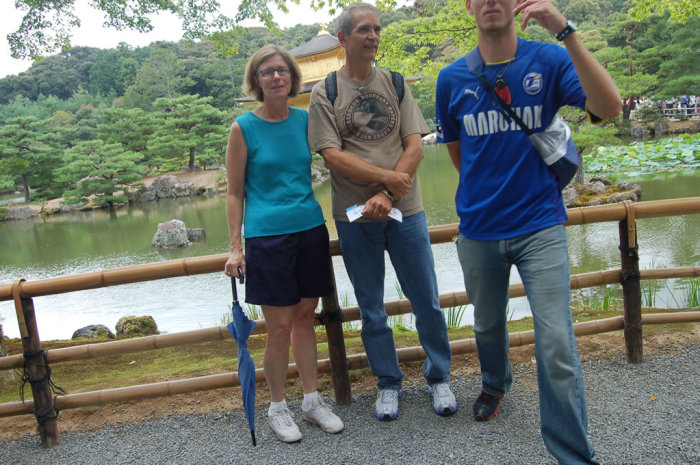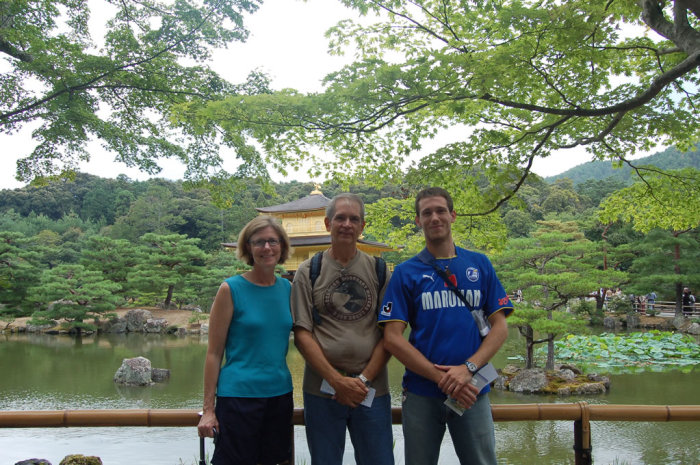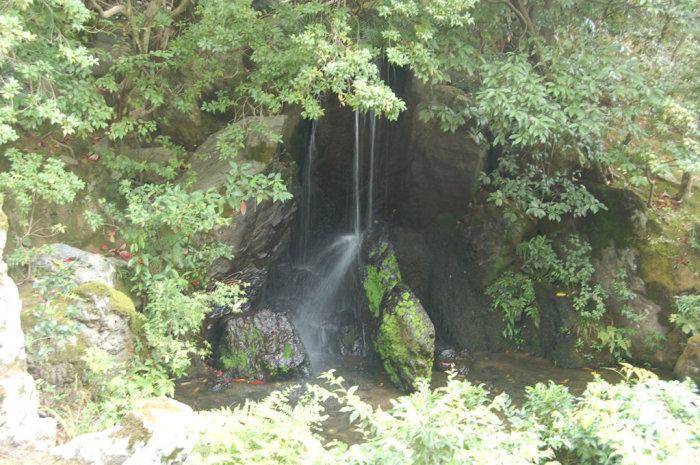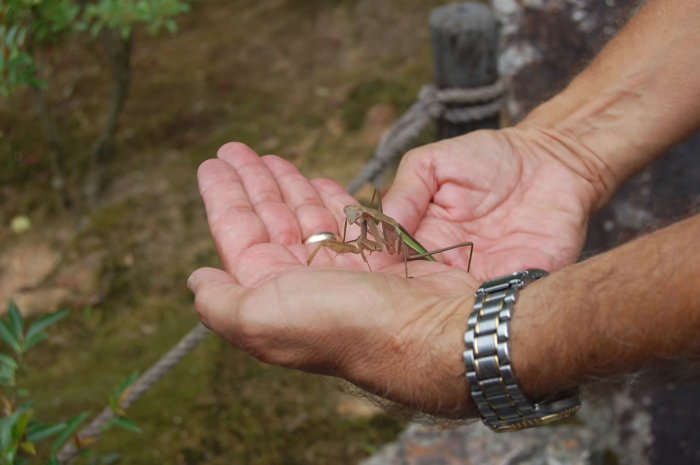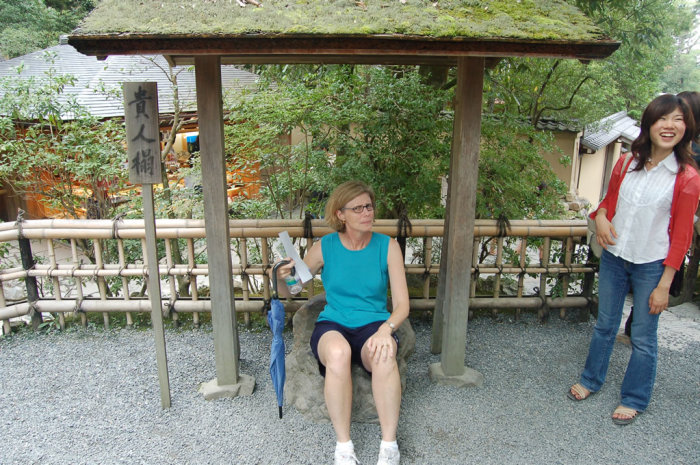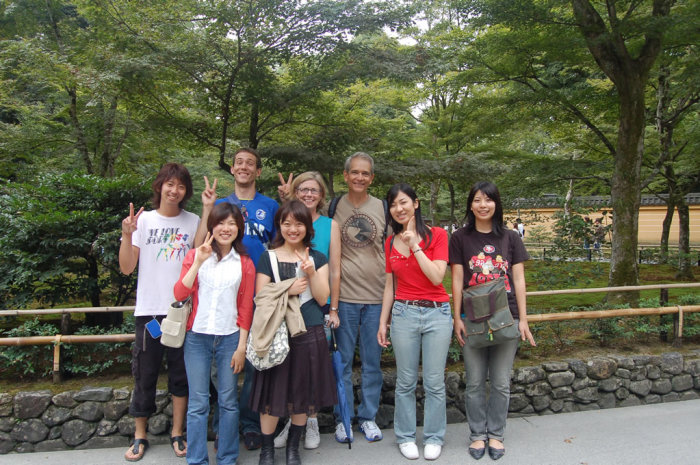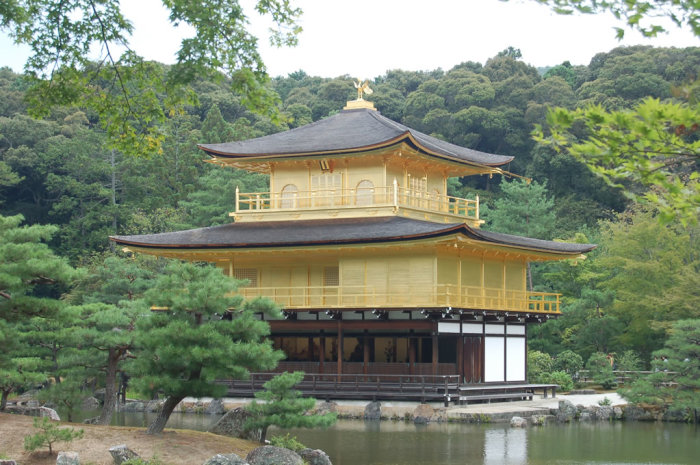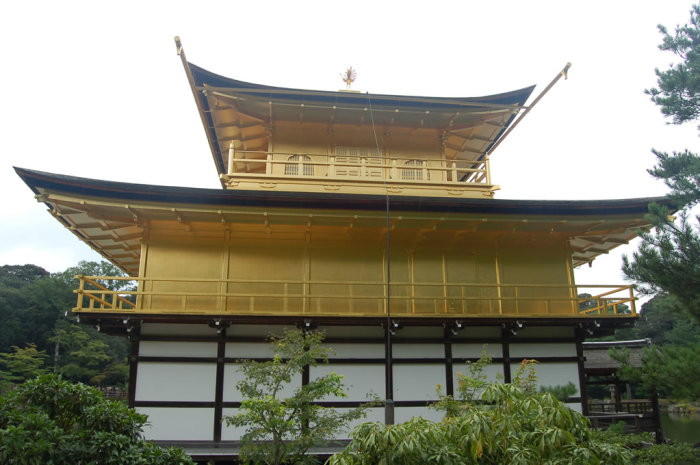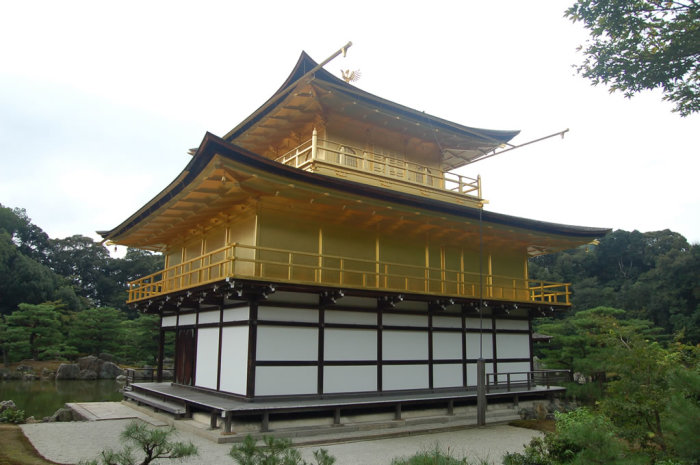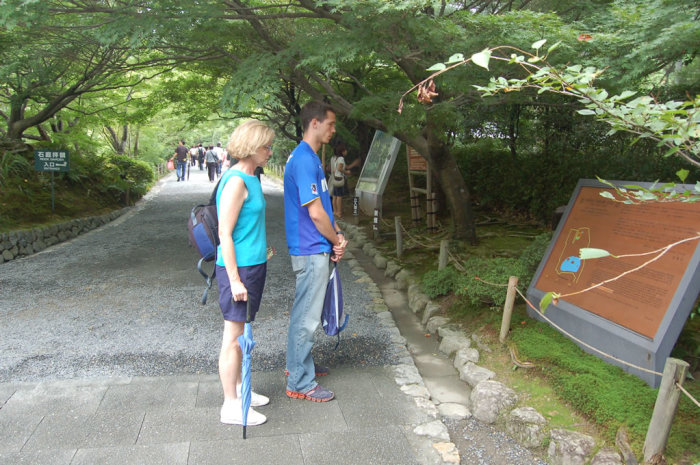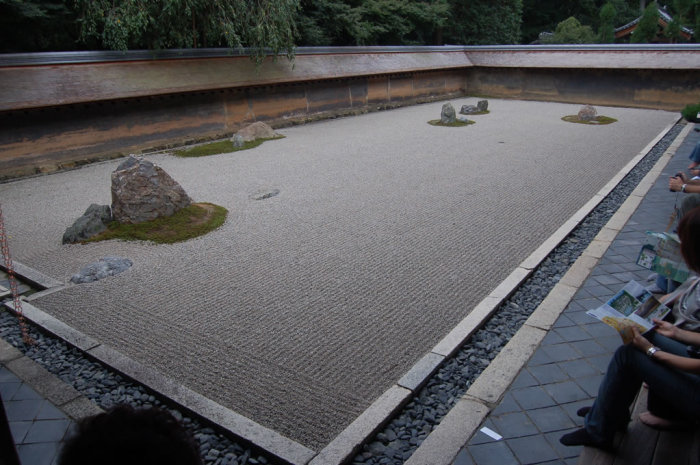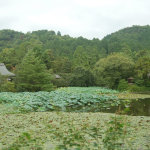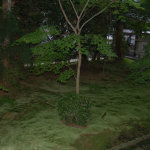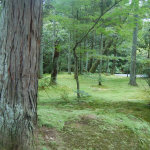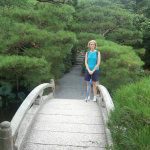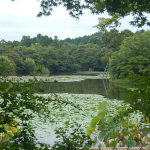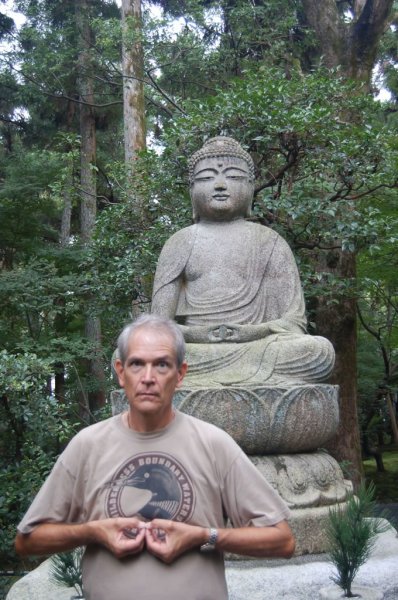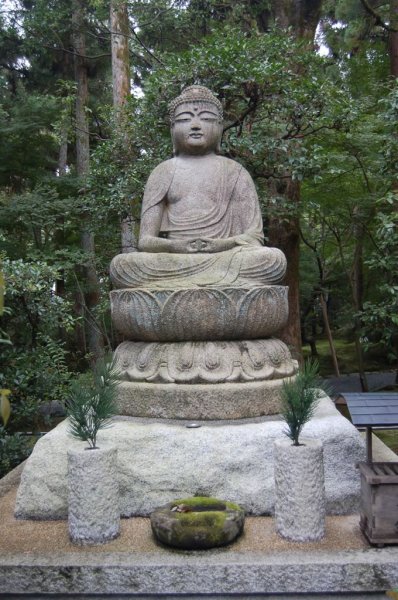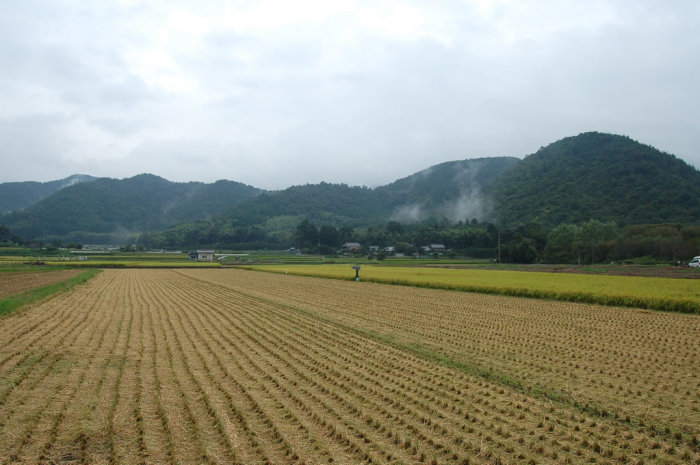Day 8, Sunday, dawned with us on a mission. We had a full day to spend in what is perhaps Japan’s most culturally blessed city, and we were not about to waste it. Furthermore, we had finally outpaced the rainy weather that had been our constant companion since my parents arrived. Ironically, while we were enjoying sunny blue skies in Kyoto, my buddies back in Beppu were hunkered down riding out the year’s biggest typhoon (hurricane) – what luck!
You could honestly spend a year in Kyoto alone and not want for things to visit and study, but with only one day to spare we had to grit our teeth, lace up our shoes, and hit the big 3 – the Imperial Palace, Kinkakuji, and Ryoanji.
Along the way we would stop and check out anything that seemed promising, but those were our three mandatory targets – and if you ever go to Kyoto they better be yours as well!
In the morning we headed directly to the Imperial Palace estate but were disappointed to discover that the damn thing is closed on weekends! Oops. We had to content ourselves with a stroll through some of the outer gardens on our way to the next destination – Kinkakuji.
Checking a map, I found a rather large Zen Buddhism temple & school north of the Palace. We headed through a residential neighborhood on foot and found it shortly. While we weren’t allowed to take pictures of the more precious rooms and objects, reasonable I think, we did get some shots of the impressive gardening and the first Zen rock garden my parents have ever seen in person.
Here’s a little culture tip for you – those white rocks, raked so nicely? They’re supposed to represent water. Don’t ask me how, but I managed to get through three years of classes as an East Asian Studies major before I figured out that one – sheesh. Before we left the grounds Mom and I posed under a nicely sculpted pine in front of the main worship hall containing their Buddha statue.
Then it was time to hit the streets again and hoof it through the Kyoto suburbs on our way across town to Kinkakuji – The Golden Pavilion Temple.
Before we got there though we passed a small Buddhist offering shrine in one of the neighborhoods. Mom requested a picture next to it for reasons that are obvious.
It can certainly be a shock to an uneducated Westerner, but swastikas are millenia old glyphs attached to all sorts of meanings, including good luck and Buddhism as it happens. It’s a sad quirk of history that they became so indelibly linked with evil in the Western mind during the 20th century.
Anyhow, visiting Kinkakuji proved quite a bit more educational for my parents, and relaxing for me, than expected. As we headed towards the main gate with tickets in hand, we were approached by a group of about a half dozen Japanese college students. A girl politely stopped us and asked if we would like a free tour. Long story short, these kids came from a local university and spent several weekends a month giving free tours at Kinkakuji to foreigners in order to improve their English-speaking ability. Sounds like a win-win situation to me!
So my parents and I were slowly escorted through the temple garden while the 5 students took turns telling us about each stop. It was a nice break for me, and great for my parents because these kids knew way more about everything than I did or could have divined from the Japanese language signs at each spot. Here we are in front of the Golden Pavillion itself.
That would have been a great picture but the person taking it was so short, and we’re so tall, that the angle of exposure put the building directly behind us instead of above our shoulders!
Another favorite spot in the gardens, this is a tiny waterfall and is noteworthy because it’s actually man-made.
The vertically oriented rock you see in the picture was set in place by hand centuries ago to make the water splash just so. This is a textbook example of the main principle of traditional Japanese gardening, wherein you aim to manipulate Nature in such a way as to improve upon its beauty and composition, but strive to limit the visual evidence that there was any such manipulation in the first place.
We also found this totally awesome praying mantis along the path.
Dad was delighted when one of our female guides reached right down and plucked it off the ground and showed it to him. Bugs don’t generally have the icky-icky-gross-get-it-off-me effect on Japanese girls that they do on American ones.
Another well-known spot: as the story goes, back in the day this was a special stone seat reserved for the biggest hot shot around and no one else could sit in it on pain of death. Nowadays, what with the garden public property and all, Japanese citizens take great delight in rubbing their asses all over what used to be some lord’s exclusive property. Mom is taking her turn most regally, and our guides found it immensely entertaining.
And before too long it was all over. We stopped and took a group picture and said goodbye. I was actually sad to leave these guys. We hardly spent an hour together but they were very friendly and I had a good laugh talking with each and every one of them.
Before we left Kinkakuji altogether, Dad and I ducked back inside to get some better shots of the Golden Pavilion proper.
It was torched by a deranged monk in the 1950’s and rebuilt, and in the early 80’s it was restored once again and this time they put on maybe 5 or 6 times as much gold leaf as had ever been on it before. That sucker is fairly blinding under a bright noonday sun. Amazing building, wish we could have tea inside like a real VIP, haha.
After a quick lunch we headed to our last stop of the day – Ryoanji.
If there’s one Zen rock garden to see, Ryoanji has it:
It’s also quite famous for other more traditional gardens about the place.
And, of course, the requisite Buddha statues…
Let’s try that again without the goofball!
By this time exhausted due to walking 10x what most fatty fat fat Americans do in a week, we headed back to our ryokan. Along the way we passed an bucolic bit of Japanese farming.
